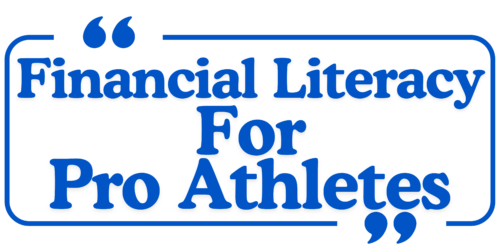What is Financial Literacy for Pro Athletes?
Financial literacy for professional athletes involves understanding and effectively managing personal finances, including budgeting, investing, saving, and planning for retirement. Given the unique financial challenges and opportunities faced by athletes, financial literacy is crucial for ensuring long-term financial stability and success.
Key Components of Financial Literacy for Pro Athletes
Budgeting: Creating a budget helps athletes track their income and expenses, ensuring they live within their means and can manage their money effectively.
Investing: Understanding various investment vehicles, such as stocks, bonds, real estate, and mutual funds, allows athletes to grow their wealth over time.
Retirement Planning: Athletes often have shorter career spans than traditional workers, making it essential to plan for retirement early to secure their financial future.
Debt Management: Financial literacy includes understanding how to manage and reduce debt, such as student loans, credit card debt, or loans taken to finance extravagant lifestyles.
Tax Planning: Athletes must understand their tax obligations and explore strategies to minimize their tax liabilities legally.
Contract Literacy: Understanding the nuances of contracts, including endorsement deals and salary negotiations, is vital for maximizing earning potential.
Estate Planning: Athletes should have a plan for their assets in case of death or incapacitation, ensuring their families are provided for.
The Reality of Financial Struggles in Professional Sports
Despite their significant earnings, many professional athletes face financial difficulties, with a shocking percentage declaring bankruptcy shortly after retiring. Here are some sobering statistics regarding financial mismanagement among athletes:
Bankruptcy Rates: According to various studies, around 60% of former NBA players are reported to go bankrupt within five years of retirement. This trend can vary among different sports, but similar patterns are observed across the board.
NFL Players: A study from the National Bureau of Economic Research found that 78% of NFL players experience financial distress within two years of leaving the sport.
WNBA Players: Approximately 80% of WNBA players face financial difficulties within a few years of retiring, reflecting the challenges of lower salaries compared to their male counterparts.
Wrestlers: Research indicates that nearly 40% of professional wrestlers have declared bankruptcy at some point in their lives.
Notable Cases of Bankruptcy
Several high-profile athletes have faced financial ruin despite earning millions throughout their careers:
Mike Tyson: The former heavyweight boxing champion earned over $300 million during his career but filed for bankruptcy in 2003, citing debts exceeding $23 million.
Allen Iverson: The former NBA star made $154 million in salary alone and another $60 million in endorsements, yet he declared bankruptcy in 2012.
Brett Favre: The Hall of Fame quarterback reportedly lost millions in bad investments and faced significant financial challenges after his retirement.
Antoine Walker: The NBA player made $110 million during his career but filed for bankruptcy in 2010 due to poor investments and excessive spending.
Deion Sanders: The NFL Hall of Famer faced financial challenges, declaring bankruptcy in 2011, despite earning over $60 million during his athletic career.
Sheryl Swoopes: The WNBA legend, who earned a substantial salary and endorsement income, faced financial difficulties and bankruptcy in 2004 after investing in a failed business.
Kerryon Johnson: The NFL running back faced financial hardships shortly after entering the league and had to manage debts exceeding $200,000.
Danica Patrick: Despite her success in racing, she faced financial challenges after retirement, highlighting the need for financial literacy even among high-earning female athletes.
Rashard Lewis: The NBA forward, who made over $100 million during his career, faced bankruptcy due to mismanagement of his wealth.
Laila Ali: The professional boxer and daughter of Muhammad Ali faced significant financial challenges despite her successful career and endorsements.
These statistics and stories underscore the critical need for financial literacy among pro athletes to navigate their unique financial landscape successfully.
